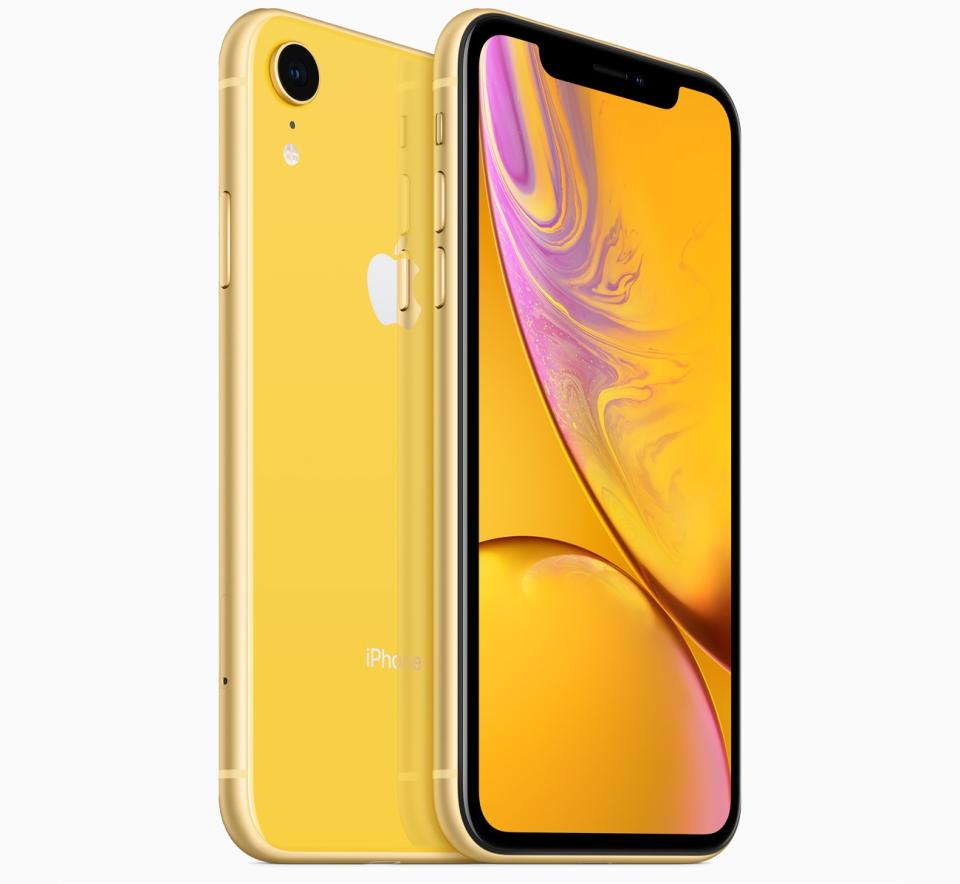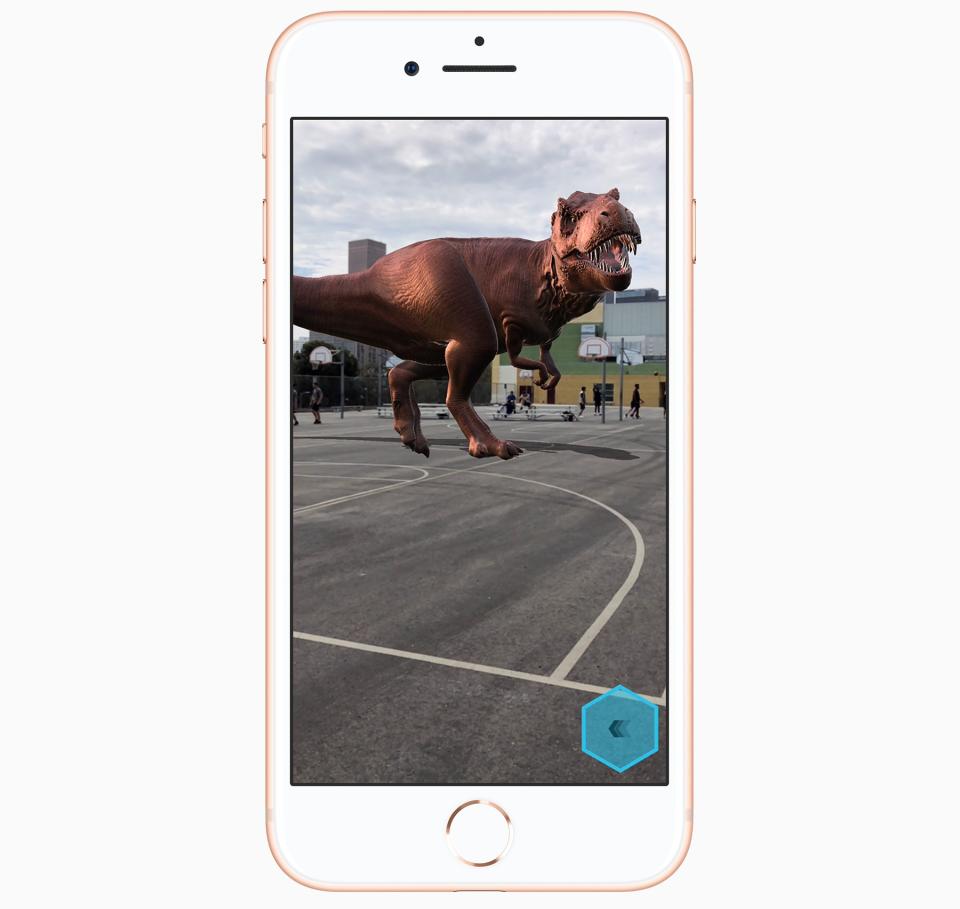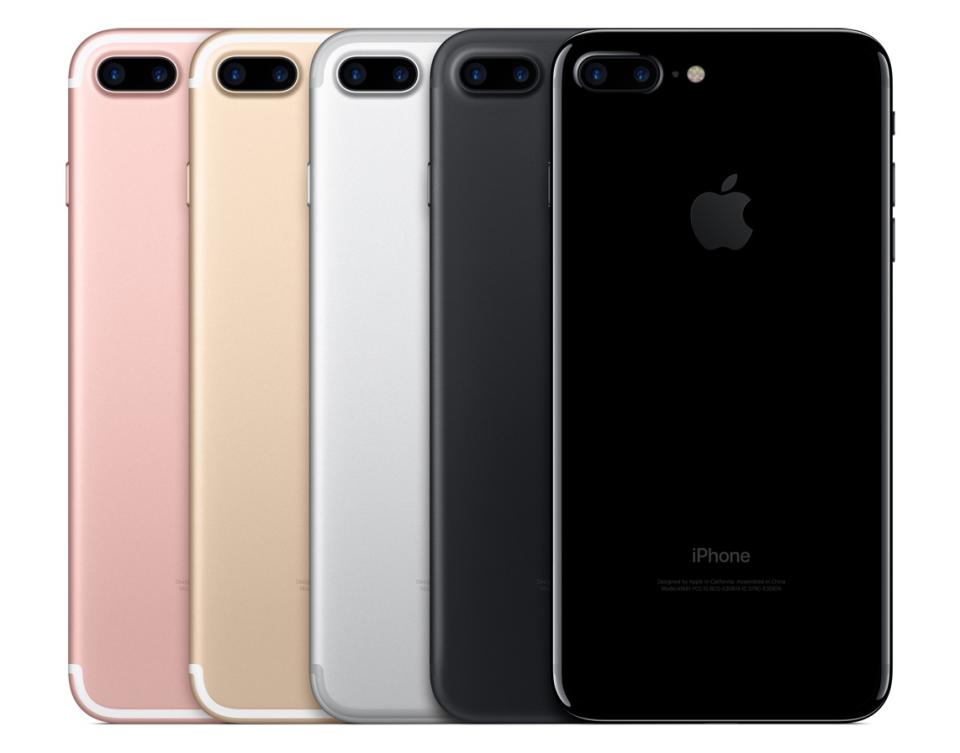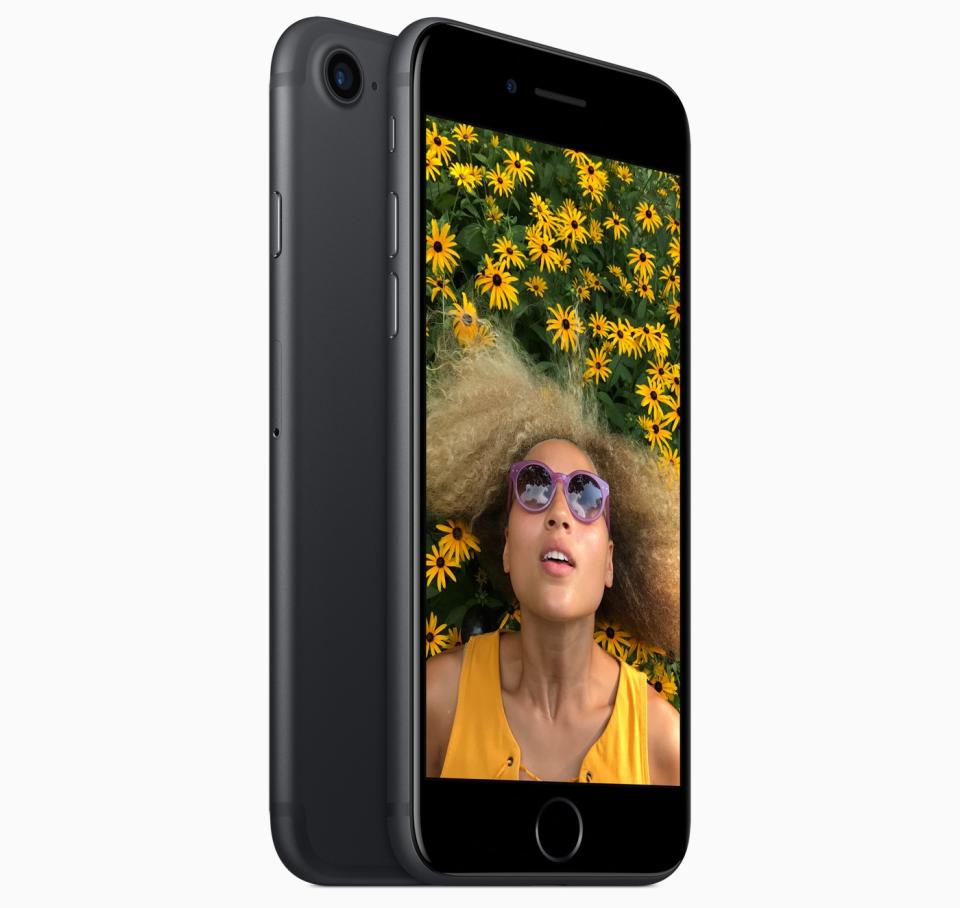How to know which iPhone is right for you

Apple’s new iPhone XS and iPhone XS Max hit store shelves on Sept. 21, with the iPhone XR set to go on sale a month later on Oct. 26. Along with the iPhone 8 and 8 Plus, and the iPhone 7 and 7 Plus, you’ve got the option of purchasing one of 7 different iPhones.
So which iPhone should you call your own? Should you drop a bank-account-busting $1,449 on an iPhone XS Max with 512GB of storage? Or opt for the more affordable iPhone 7 with 32GB of space for $449?
I’ve got the lowdown to help you decide.
iPhone XS Max
Buy this if:
If you want the absolute best iPhone you can buy with the largest battery and most storage space, go with the iPhone XS Max.
The breakdown:
The mammoth handset that only iPhone lovers with the deepest pockets will opt for, the iPhone XS Max features the biggest display ever offered on an iPhone at 6.5 inches. Despite that, the XS Max’s edge-to-edge screen design means the Max is actually a hair shorter than the iPhone 8 Plus, which only has a 5.5-inch panel.
Naturally, the XS Max comes with Apple’s Super Retina HD OLED display technology, which offers more vibrant colors and deeper blacks than the LCD panels found on older iPhones.

From a performance standpoint, the XS Max includes Apple’s new A12 Bionic chip, which features a CPU that’s two times faster than the CPU found in last year’s A11 Bionic chip and a 50% faster GPU. The A12’s power is especially useful when playing games and using augmented reality apps. Then there’s the Max’s storage capacity. The base model includes 64GB of space for $1,099, while the 256GB model will cost $1,249. The 512GB version of the XS Max, meanwhile, costs a staggering $1,449.
The XS Max also gets Apple’s best smartphone camera, a dual-lens, 12MP unit with wide-angle and telephoto capabilities. The wide-angle lens has a 1.8 aperture, while the telephoto lens has a 2.4 aperture. The lower the aperture number the larger the lens opening, which allows the camera to capture more light. This difference between the lenses helps create the bokeh look of Apple’s Portrait mode photos. The telephoto lens also includes a 2X optical zoom, which means you can zoom in on a subject without the distortion you normally see with digital zooms.
The XS Max’s battery is rated for 15 hours of wireless video playback that’s an hour and a half longer than the iPhone X’s battery.
iPhone XS
Buy this if:
You want the best Apple has to offer, but in a more compact package and at a better price.
The breakdown:
Apple’s iPhone XS is a virtual clone of the iPhone XS Max, but in a smaller form factor. You get the same processor, the same cameras, the same storage options and display type. But instead of a 6.5-inch screen, the XS has a more pocket-friendly 5.8-inch panel. The XS’s smaller size means it also gets a shorter battery life than the Max: 14 hours of wireless playback versus the XS Max’s 15 hours.
Naturally, that also means the XS comes with a lower price tag. The base model gets you 64GB of storage for $999, while the 246GB model will cost you $1,149. The 512GB version costs $1,349.
iPhone XR

Buy this if:
You want the performance and power of the iPhone XS without the hefty price tag.
The breakdown:
The iPhone XR is the kind of phone you’d buy if you care more about your smartphone’s performance than anything else. Like the XS and XS Max, the XR has an edge-to-edge screen. But unlike its pricier stablemates, the XR features an LCD Liquid Retina HD display, which means you won’t be able to take advantage of HDR content.
Sporting a 6.1-inch panel, the XR slots in between the 5.8-inch XS and 6.5-inch XS Max in terms of screen size. The XR also drops the XS’s and XS Max’s telephoto lens, and instead uses a single 12MP wide-angle camera. You can still take photos with a bokeh effect, but they might not look as good as those taken with the XS or XS Max. Surprisingly, the XR also misses out on Apple’s 3D Touch technology.
The XR does, however, get more battery life with up to 16 hours of wireless video playback.
As far as pricing, the XR starts at $749 with 64GB of storage. For $799 you’ll get 128GB of space, while a 256GB model will cost you $899.
iPhone 8 Plus

Buy this if:
You want a big-screen iPhone, but can’t let go of the Home button.
The breakdown:
Apple doesn’t sell the iPhone X anymore, so if you still want a larger display without forking over a lot of dough, the iPhone 8 Plus is your best bet. The 8 Plus is available for $699 with 64GB of storage or $849 with 256GB of space.
With a 5.5-inch Retina HD display, the 8 Plus won’t produce the kind of vivid colors you’d find on the XS Max or XS. Instead it will match what you’d see on the iPhone XR. The 8 Plus runs on Apple’s previous generation A11 Bionic chip, so it won’t be as speedy as the iPhone XS, XS Max or XR, but it will certainly hold its own.
Like the iPhone XS and XS Max, the 8 Plus includes a dual-lens camera with wide-angle and telephoto lenses. The Plus’s wide-angle lens, though, has a 1.8 aperture, while the telephoto lens has a 2.8 aperture.
iPhone 8

Buy this if:
You want a newer iPhone, but don’t want to pay a huge price tag.
The breakdown:
Apple’s iPhone 8 packs all of the power and performance of the iPhone 8 Plus without the added bulk of that 5.5-inch display. The phone’s 4.7-inch screen and relatively diminutive proportions make it the most pocket-friendly iPhone in Apple’s lineup. As with the 8 Plus, the 8 comes with a Retina HD display and an A11 Bionic chip. Unlike, the 8 Plus, though, the 8 only has a single wide-angle camera, so you don’t get that 2X optical zoom.
The iPhone is available with 64GB of storage for $599 and 256GB for $749. For handsets that are a year old, those are some solid prices.
iPhone 7 Plus

Buy this if:
You want a big iPhone, at the lowest price.
The breakdown:
The iPhone 7 Plus is the classic big-screen smartphone in Apple’s garage. The handset features the same kind of 5.5-inch Retina HD display as the iPhone 8 Plus — with the exception of the 8 Plus’s included True Tone display feature, which adjusts the screen’s white balance depending on the kind of lighting you’re in.
The 7 Plus comes with Apple’s A10 Fusion processor rather than the iPhone 8 Plus’s A11 Bionic. The 7 Plus also gets a dual-lens camera, like the 8 Plus, though you don’t get the 8 Plus’s auto HDR feature. The 7 Plus has most of the features the 8 Plus has — except wireless charging and faster speed — making the 7 Plus a solid choice for most consumers.
And at $569 for 32GB of storage space and $699 for 128GB, the 7 Plus is a handset that won’t break the bank.
iPhone 7

Buy this if:
You want an iPhone, but are tight on cash.
The breakdown:
Apple’s iPhone 7 is the least expensive iPhone Apple sells through its stores. You can still pick up older models through resellers, but if you want to purchase your handset through Apple, you should go with the 7. With a 4.7-inch Retina HD display and an A10 Fusion processor, the iPhone 7 is a smaller version of the iPhone 7 Plus. Unlike the 7 Plus, though, the 7 doesn’t have a dual-lens camera.
For $449 you get a handset with 32GB of storage, or you can pay $549 for 128GB.
More from Dan:
Ex-Google engineer who worked on China search engine calls it ‘wrong’
Apple Watch Series 4 hands-on: Big screens, big improvements
Google’s Lenovo Smart Display is the best smart speaker you can buy
Email Daniel Howley at [email protected]; follow him on Twitter at @DanielHowley. Follow Yahoo Finance on Facebook, Twitter, Instagram, and LinkedIn

